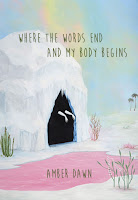Silver Surfer
Much like Mark Waid’s run on Daredevil, Dan Slott’s Silver
Surfer is imbued with a sense of fun, strong characterization and a
willingness to take the character in entirely new directions. In the case of Norin
Radd, the intergalactic surfer and ex-herald of Galactus, Devourer of Worlds,
there is space aplenty to play with. This is, without a doubt, one of Marvel Comics' most successful relaunches of a title as a starting point to bring in new readers.
I recall being a young teenager and watching the 1985
film, Explorers, about three kids who
end up exploring outer space. The premise with its wide-open possibilities was irresistible
to my impressionable mind. However, the execution of the premise fell far
short of my lofty expectations. The kids end up chasing space aliens or getting pursued by space aliens. Now,
as much as I liked aliens at the time, I thought the film could have done
anything—been anything—instead of this rather simplistic and limiting piece.
In Slott’s Silver
Surfer, I find a similar premise with many possibilities. But instead of disappointment, I find joy and great writing. Norin develops a
passing friendship with Dawn, a down-to-earth human who runs a bed-and-breakfast
in New England with her father. Through a series of events, Dawn ends up
travelling with the Surfer. Their adventures take them near and far and Dawn’s
presence humanizes Norin Radd. Now, I‘ve seen many examples of good and
so-so portrayals of Radd, a series in the 1990’s pencilled by Ron Lim and penned by a variety of writers and a limited series by Stan
Lee and Moebius among them. The Norin
Radd character is as malleable as the writer’s intentions, as can happen in the comic-book industry. Thus, he can be
vengeful, benevolent, disenfranchised—iin other words, the characterization
varies wildly.
Slott, in his enjoyable run, uses Radd’s alien
nature to his advantage. The Silver Surfer thinks himself beneath such menial pleasures as eating, or
thinking of others first, or staying anywhere for long. So Slott establishes Radd’s
ability to transform back to human form, granting Radd the ability to eat and
to enjoy small pleasures. Radd also forms a rapport with Dawn so that he is not
merely flitting away at his nearest opportunity. Neither is he pouting like in many of his lone-wolf incarnations. These alterations to the Silver Surfer mythos allow for narrative far beyond simple cosmic tussles. Instead, the Surfer is learning. Through Dawn, he is rediscovering joy, from the simple of act of eating to
witnessing grand cosmic beauty. He also finding out what it feels like to care for someone else instead of heading off again into the cosmos.
Lastly, Norin’s surfboard is shown as being sentient and Dawn even names it “Toomie” from the Surfer calling “My board! To me!” To top that off, Toomie even saves Dawn’s life in a few instances (This last observation is courtesy of a seven-year-old boy who is also a fan of Silver Surfer.).
Lastly, Norin’s surfboard is shown as being sentient and Dawn even names it “Toomie” from the Surfer calling “My board! To me!” To top that off, Toomie even saves Dawn’s life in a few instances (This last observation is courtesy of a seven-year-old boy who is also a fan of Silver Surfer.).
 |
| An example of Mike Allred's simple, clean lines. What beauty. |
That there is a sense of fun and adventure and admittedly a
kid-friendly aspect to the book is also a boon. It’s this sense of fun and humour and
playfulness that Marvel Comics sometimes lacks in its other titles, most
notably in Jonathan Hickman's New Avengers:
Everything Dies. This particular story arc lives up to its billing as a grim
and relentless march requiring sacrifice after sacrifice and little
action. Hickman's interpretations of the Avengers represents a
fascinating phase in the history of the book, but not a very palatable one.
But I digress. Industry legend Mike Allred’s masterful art on Silver Surfer is a pleasure to behold—clean, beautiful, and simple. Comic-book
folks have compared his scribbles to the iconic Jack Kirby’s. Regardless, Allred’s
style is perfectly suited to storytelling that can reach to the far ends of the
universe, and into new places of storytelling.















